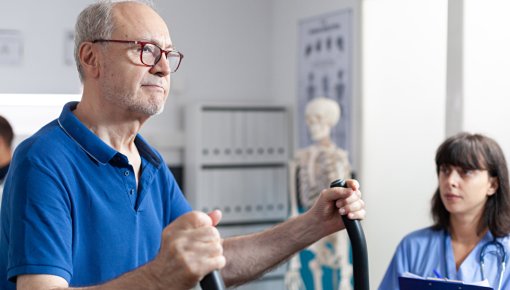Deutsche Gesellschaft für Allgemeinmedizin und Familienmedizin (DEGAM). Schlaganfall (S3-Leitlinie). AWMF-Registernr.: 053-011. 2020.
Knecht S, Hesse S, Oster P. Rehabilitation after stroke. Dtsch Arztebl Int 2011; 108(36): 600-606.
Legg LA, Lewis SR, Schofield-Robinson OJ et al. Occupational therapy for adults with problems in activities of daily living after stroke. Cochrane Database Syst Rev 2017; (7): CD003585.
Meads H, Hunt J, Page A et al. Stroke survivors' experiences of upper limb recovery: a systematic review of qualitative studies. Phys Ther Rev 2020; 25(5/6): 316-330.
Palstam A, Tornbom M, Sunnerhagen KS. Experiences of returning to work and maintaining work 7 to 8 years after a stroke: a qualitative interview study in Sweden. BMJ Open 2018; 8(7): e021182.
Pollock A, Baer G, Campbell P et al. Physical rehabilitation approaches for the recovery of function and mobility following stroke. Cochrane Database Syst Rev 2014; (4): CD001920.
Saunders DH, Sanderson M, Hayes S et al. Physical fitness training for stroke patients. Cochrane Database Syst Rev 2016; (3): CD003316.
Schnabel S, van Wijck F, Bain B et al. Experiences of augmented arm rehabilitation including supported self-management after stroke: a qualitative investigation. Clin Rehabil 2021; 35(2): 288-301.
IQWiG health information is written with the aim of helping people understand the advantages and disadvantages of the main treatment options and health care services.
Because IQWiG is a German institute, some of the information provided here is specific to the German health care system. The suitability of any of the described options in an individual case can be determined by talking to a doctor. informedhealth.org can provide support for talks with doctors and other medical professionals, but cannot replace them. We do not offer individual consultations.
Our information is based on the results of good-quality studies. It is written by a team of health care professionals, scientists and editors, and reviewed by external experts. You can find a detailed description of how our health information is produced and updated in our methods.

